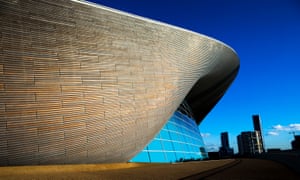Citroën exhibits an exclusive Airbump-inspired piece of furniture at the 2016 Milan Design Week – the Cactus Chair.
At 55th edition of the Salone del Mobile.
Developed by the renowned Italian architect and designer Mario Bellini, this work of art is directly inspired by the technology Airbump® C4 Cactus. The "Cactus Chair" perfectly reflects the will of the Citroën brand to combine purpose and aesthetics through a design chair, comfortable and light.
The design is contagious. They will explain what the architect Mario Bellini, Alexander Malval, director of Citroën design center and Angelo Simone, director of the Citroën brand in Italy to the presentation of the Cactus chair.

During the Milan Design Week, Cactus Chair is exhibited in Benetton windows in Piazza Duomo, at Tribute to Domus celebrating the thousand issues of the magazine. To celebrate the spirit that unites Domus and United Colors of Benetton, the ten store windows UCB host a special display created by Fabrica. Seventeen icons of dialogue design with Pantone Year 2016, and with the collection Spring Summer brand, in an exaltation of color in all its forms
Seventeen icons of dialogue design with Pantone Year 2016, and with the collection Spring Summer brand, in an exaltation of color in all its forms

Citroen has amazed with his creativity in the automotive world by developing Airbump®: the exclusive protection of the C4 Cactus body where style, technology and functionality blend together to create a design object. Similarly, Mario Bellini has been working on a new chair inspired by the concept of these extraordinary protection elements.

Citroën’s Airbump technology uses a supple skin in TPU (thermo-plastic urethane) to protect the car’s bodywork against knocks and scratches in everyday use. It encloses a multitude of air capsules and requires no particular maintenance.
'Carrier and housing, seat and chair, door and door, roof and roof, window and window. How many words shared between the space of a car and that of a house. That must be why when Citroën Italy took me in the studio, like a "technological trophy" the Airbump® the first idea I had was touching him: why not imagine that further meeting a lightness and economy of a plastic chair also add the convenience of a real padding?
That must be why when Citroën Italy took me in the studio, like a "technological trophy" the Airbump® the first idea I had was touching him: why not imagine that further meeting a lightness and economy of a plastic chair also add the convenience of a real padding?
 That must be why when Citroën Italy took me in the studio, like a "technological trophy" the Airbump® the first idea I had was touching him: why not imagine that further meeting a lightness and economy of a plastic chair also add the convenience of a real padding?
That must be why when Citroën Italy took me in the studio, like a "technological trophy" the Airbump® the first idea I had was touching him: why not imagine that further meeting a lightness and economy of a plastic chair also add the convenience of a real padding?
This innovative creation find themselves two experts in the use of polymers, as well as two icons of world design: Citroën and Mario Bellini.

Citroën E-MEHARI styled by Courrèges — is the outcome of meticulous work on colours and materials.

There’s a predominant emphasis on white, with accents in bright orange, creating, says Citroën “a refreshing sense of freedom, expressed through functionality and space”.Leveraging the air between both dell'Airbump® flexible shells, an air spring, perfect cushioning, was born in a chair by the paradoxical name: Cactus Chair. From the car to the cabinet. "
A distinctive design feature is the “Airbump” panels on the car's sides, designed to protect the vehicle from damage in car parks
11 to 17 April 2016
Cactus Chair. The car is moving.
Brings in with excitement at Garage Tortona
Via Tortona 20, Milan

















